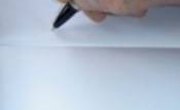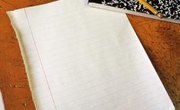Autobiographies like "The Long Walk to Freedom" by Nelson Mandela and "A Moveable Feast" by Ernest Hemingway outline their personal life stories. While you may not write a famous autobiographical book, creating your own personal autobiographical statement is a process that may be repeated throughout your life. Potential employers and educational institutions often request one from employees or students.
Companies may include them for each employee on their websites or in brochures for potential clients to read. Writing a strong autobiographical statement could potentially translate into being accepted or denied entry to a college. When you go for your a job interview, a well-written statement might mean you get hired instead of being passed over for another candidate. In the professional world, clients can learn about your strengths from a statement posted on your company's website; it might mean the difference between landing a big client or losing out on the opportunity.
Follow Instructions
Before you begin writing, look over at the personal autobiographical statement instructions from your teacher. Schools or employers typically provide a word limit or page-length limit. Before you begin, take note of this limit. If you exceed this simple instruction, your statement likely won't be considered with as much weight or may be set aside. Also note any specific areas that the instructions does tell you to cover and include those points.
Find Audience
Consider your audience and write accordingly. For example, if you are writing a personal statement as part of a graduate school application, you'll probably want to focus on your academic achievements and educational history. If you are writing a statement for a potential employer's review, your focus will be more work-oriented and professional with a focus on skills, experience and work-related education.
Include Personal Story
Consider centering your statement around a personal story. After all, when a review committee or potential clients want to find out about your accomplishments, they'll turn to your resume. Your personal autobiographical statement should be less of a resume and more of an introduction to the real you. A personal story typifying you and and your strengths does this. A key goal here would be to include a story that makes your statement more memorable.
Proofreading and Revisions
After you complete the statement, run a spelling and grammar check. If there are spelling errors in your statement, it will likely be viewed far less seriously than it otherwise would be. Read through the statement several times, looking for typos and grammatical errors. Ask someone you trust to read through your statement too; it's surprising how others often immediately see errors that you missed over several read-throughs of your own. If you aren't working on a tight deadline, allow a few weeks to pass before you turn in or post your personal autobiographical statement. In that time period, you may notice something you missed or think of something to change.
Related Articles
References
Writer Bio
Sarah Jackson has been writing freelance for almost four years, the majority of her work being featured on Adventure Journey, an online travel publication. She is currently in her final year of her M.S.W. degree at Temple University, with a B.S. degree from BYU.











